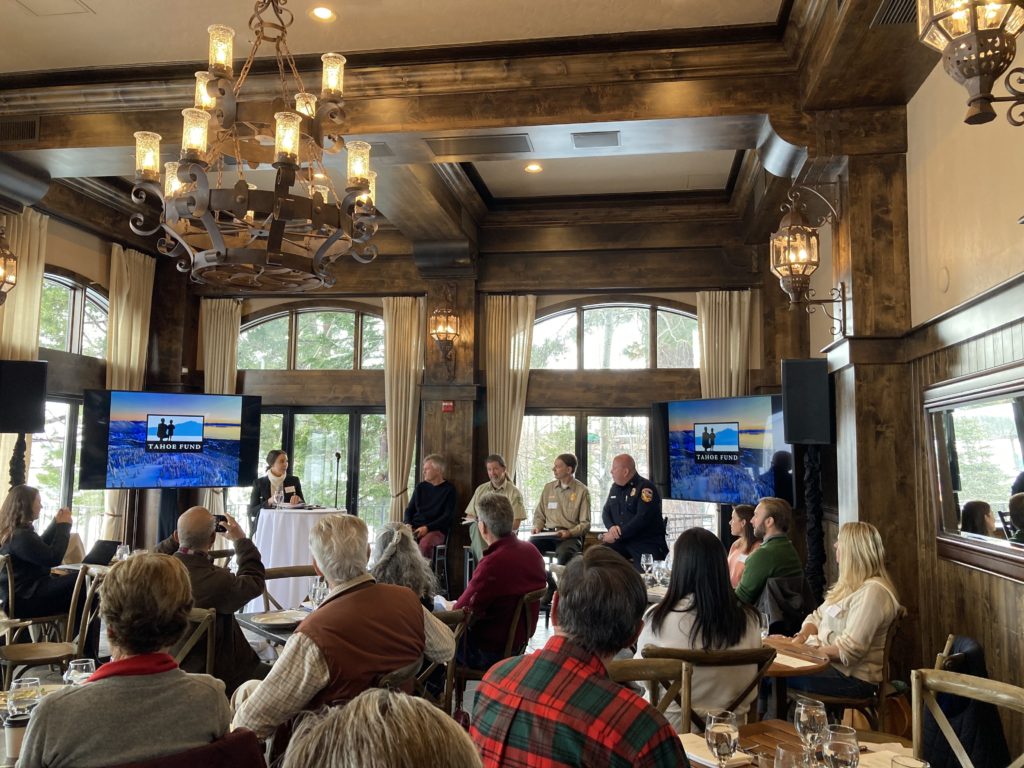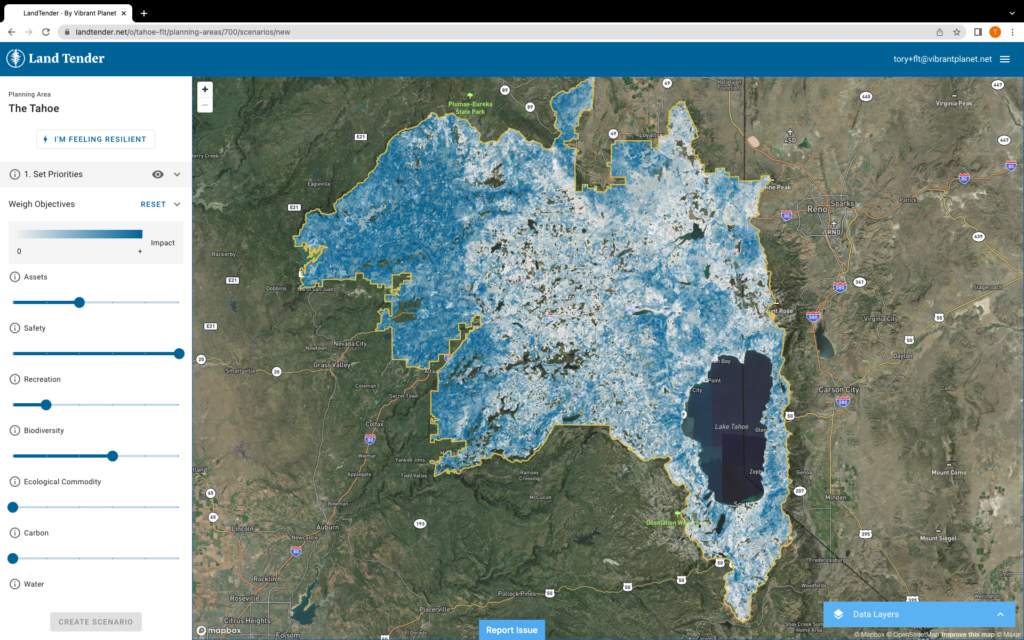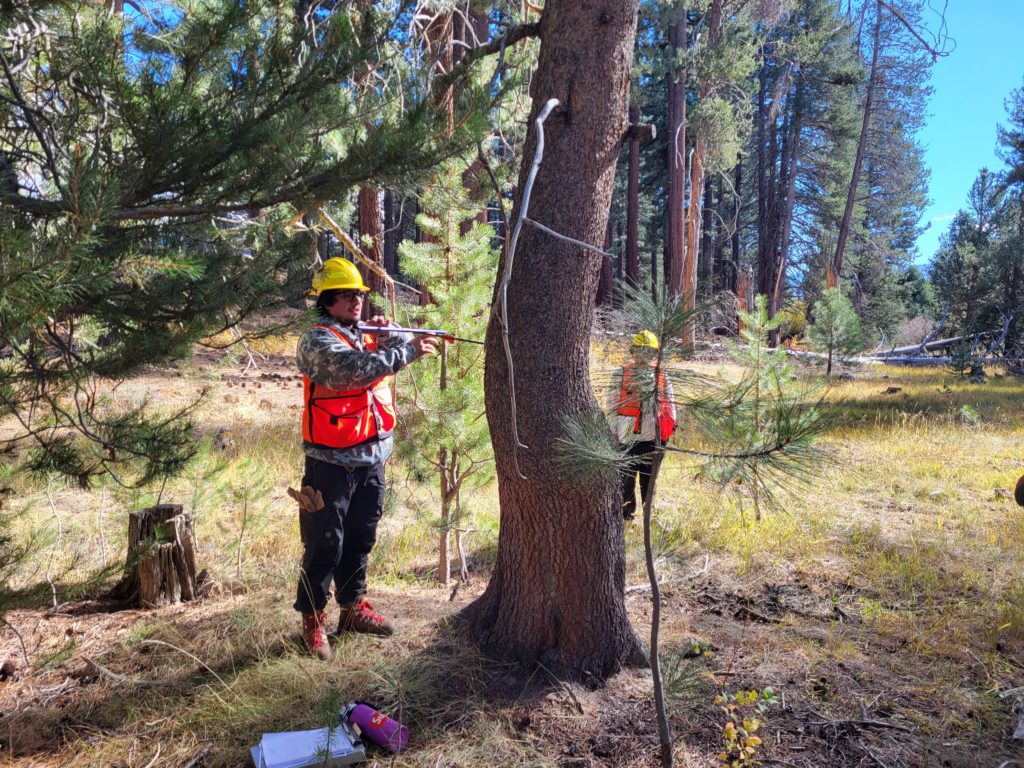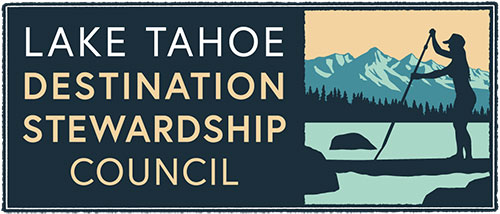
New data estimates that we currently have a whopping 75 million trees in the Tahoe Basin, compared to only 2 million in the 1800s. The vast majority of these trees are competing with each other for resources, and hundreds of thousands have died in recent years. This is bad for forest health, but it also spells trouble when it comes to wildfire: Weak, dead and dying trees are extremely potent fuel for wildfire. In an overly-dense forest like Tahoe’s, they enable fire to travel fast, far and with great intensity.
At the Tahoe Fund’s annual Forest Health Briefing, sponsored by J.P. Morgan, experts highlighted what can be done to restore Tahoe’s forests to health and protect habitat, life and economy. On December 3, 2022, over 70 supporters and partners gathered at the West Shore Café to hear from presenters and panelists who are implementing innovative solutions to make our forests healthier and our community more resilient to wildfire.
“We’re seeing a different type of fire now, largely due to overly-dense and unhealthy forests,” said Brian Estes, unit chief, Nevada-Yuba-Placer, California Department of Forestry & Fire Protection (CAL FIRE). “After the Caldor Fire found an avenue into the Lake Tahoe Basin, we saw a great need for proactive planning with our partners throughout the Basin to prioritize the protection of life and property in the face of devastating fires.”
One solution is Land Tender, a new software tool funded in part by the Tahoe Fund that uses high-resolution imagery and artificial intelligence to map and generate powerful analytics about our forests. This allows land managers and their community partners to plan targeted forest health projects with unprecedented specificity. Scott Conway, chief resilience officer of Vibrant Planet, the company that created this technology, demonstrated how Land Tender makes it easier for stakeholders to collaborate, while also significantly reducing the planning time for projects – in some cases, from years to months.
“We are no longer doing random acts of restoration,” explained Conway. “We can take the dollars raised by private donors and public funding and put them in the right places to have the most significant impact for our forests and our community.”

Another critical aspect of forest restoration is having a place to take fuel – like downed, dead or excess trees – once it has been removed from the forest. Historically, there have been few options within the Tahoe region, which means contractors have had to truck the material – often 100 miles or more – to the nearest offtake site. Because there are so few to begin with, these sites are often full; or the cost of long-distance hauling can exceed the value of the timber itself. Luckily, things are changing with the opening of a new sawmill in Carson City. The mill, which sits on 40 acres of land owned by the Washoe Tribe, will be the first sawmill of its size to be built in the area in nearly a century. The Tahoe Fund has been working with the project leaders, Tahoe Forest Products LLC and the Washoe Development Corporation, an affiliate of Washoe Tribe of Nevada & California, to help bring this much needed resource to life.
During the Forest Health Briefing, Kevin Leary, chairman of Tahoe Forest Products, shared that the mill will have a major impact on restoring forest health and preventing wildfire by creating a local market for both green and burned logs. The facility will process approximately 50 million board feet of lumber per year. It has already received 15 million board feet of hazard trees from Sierra at Tahoe that were burned in the 2021 Caldor Fire.
Leary also emphasized that many different groups have a role to play in forest health, from policymakers to private funders. “Forest health requires a holistic approach that spans industries,” said Leary.
Having a skilled forestry workforce is another key piece of solving forest health challenges, said Erick Walker, Forest Supervisor, U.S. Forest Service, Lake Tahoe Basin Management Unit. “We’re up against a labor shortage,” said Walker. “We know what needs to be done to get our forests to function and look like they once did, but we need skilled people to do this work.”
The Tahoe Fund recently awarded scholarships to every student in Lake Tahoe Community College’s new forestry program to enable more young people to choose a career in this critically understaffed field. The new program is teaching students how to conduct forest management work, from planning to implementation.Graduates will be qualified for jobs with CAL FIRE, the US Forest Service, the California Tahoe Conservancy, the Tahoe Resource Conservation District, and other agencies that are part of the Tahoe Fire and Fuels Team.

Collaboration among these agencies is key to scaling these efforts, which is the goal of the Governor’s Wildfire and Forest Resilience Task Force, according to its director, Patrick Wright. Wright also discussed the need for sustained government funding: “Trying to treat a million acres of forest annually requires $1-2 billion a year,” said Wright. “While there’s a budget surplus now, we need this level of funding every year to move away from small scale projects and go big.”
There’s also a critical role for individual donors and the private sector to play. Often, there’s a need to close funding gaps in order to leverage public dollars. For example, the Tahoe Fund’s $50,000 investment of private funding in Land Tender helped secure $500,000 in state funding. We’ve seen that when we support innovative ideas – like Land Tender and the new sawmill – game-changing solutions come to life.
“If we can successfully bring the private sector and nonprofits into partnership with land management agencies to implement these projects, we can move at a pace and scale that will actually make a difference,” said Ryan Shane, Deputy Administrator, Nevada Division of Forestry. “You can make magic happen if you are willing to invest in these innovative solutions.”
Learn more about the Tahoe Fund’s forest health initiatives and get involved today: www.tahoefund.org/smartestforest.
A special thank you to our Forest Briefing sponsor, J.P. Morgan, for making this event possible.
